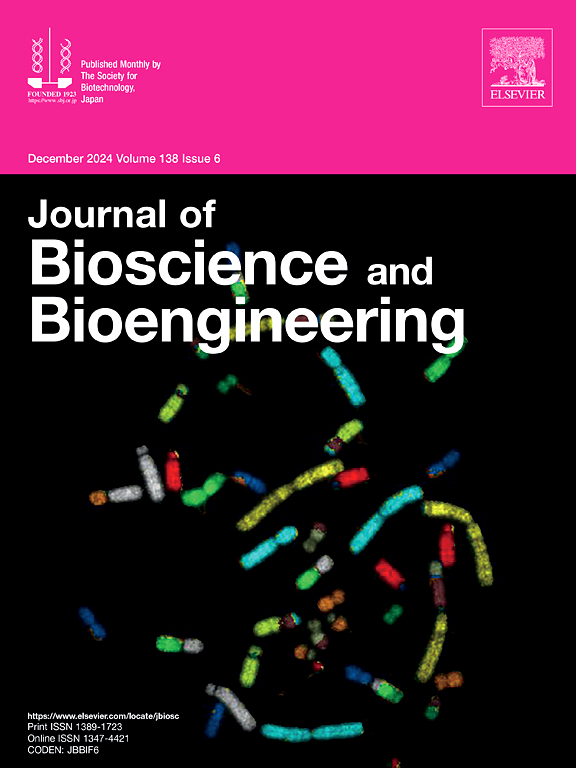Isolation and characterization of koji mold (Aspergillus oryzae) from nature in Niigata
IF 2.3
4区 生物学
Q3 BIOTECHNOLOGY & APPLIED MICROBIOLOGY
引用次数: 0
Abstract
Koji mold (Aspergillus oryzae) is a key microorganism in brewing and fermentation in Japan. We isolated koji molds from the environment in Niigata Prefecture. Eighty-one environmental samples were placed on isolation medium made from steamed rice with wood ash and 36 Aspergillus section Flavi-like strains were obtained. Of those, 26 strains did not produce aflatoxin. We studied their morphology, sequence of ITS region, calmodulin gene, aflatoxin biosynthetic homologous gene cluster and α-amylase gene and fermentation-related enzyme activities. Furthermore, DNA-seq analysis of 14 strains from 26 non-aflatoxin producing strains were conducted and compared the three mycotoxin biosynthetic gene clusters (aflatoxin, cyclopiazonic acid, and aflatrem) and fermentation-related genes against those of reference strain A. oryzae RIB40. In some strains, gene sequences confirmed the absence of mycotoxin production, but differences in fermentation-related enzyme activities could not be explained well by amino acid substitutions. We classified the 26 isolates into 6 morphology types based on the appearance of colonies and mating types, and it was found that strains of the same morphology type had similar enzymatic profiles and gene sequences. Our results show that koji molds with various properties occur in the environment, and it will expand the possibilities of koji mold in industrial use.
从新潟自然界中分离麴霉(Aspergillus oryzae)并确定其特征。
麴霉菌(Aspergillus oryzae)是日本酿造和发酵过程中的一种关键微生物。我们从新泻县的环境中分离出了麴霉菌。我们将 81 份环境样本置于用木灰蒸米制成的分离培养基上,获得了 36 株类黄曲霉菌(Aspergillus section Flavi-like)。其中 26 株不产生黄曲霉毒素。我们研究了它们的形态、ITS区序列、钙调蛋白基因、黄曲霉毒素生物合成同源基因簇和α-淀粉酶基因,以及与发酵相关的酶活性。此外,还对 26 株不产生黄曲霉毒素的菌株中的 14 株进行了 DNA-seq 分析,并将三个霉菌毒素生物合成基因簇(黄曲霉毒素、环霞糠酸和黄曲霉毒素)和发酵相关基因与参考菌株 A. oryzae RIB40 的基因序列进行了比较。在一些菌株中,基因序列证实其不产生霉菌毒素,但发酵相关酶活性的差异不能很好地用氨基酸替换来解释。根据菌落外观和交配类型,我们将 26 株分离物分为 6 种形态类型,结果发现,同一形态类型的菌株具有相似的酶谱和基因序列。我们的研究结果表明,环境中存在不同性质的麴霉,这将拓展麴霉在工业应用中的可能性。
本文章由计算机程序翻译,如有差异,请以英文原文为准。
求助全文
约1分钟内获得全文
求助全文
来源期刊

Journal of bioscience and bioengineering
生物-生物工程与应用微生物
CiteScore
5.90
自引率
3.60%
发文量
144
审稿时长
51 days
期刊介绍:
The Journal of Bioscience and Bioengineering is a research journal publishing original full-length research papers, reviews, and Letters to the Editor. The Journal is devoted to the advancement and dissemination of knowledge concerning fermentation technology, biochemical engineering, food technology and microbiology.
 求助内容:
求助内容: 应助结果提醒方式:
应助结果提醒方式:


